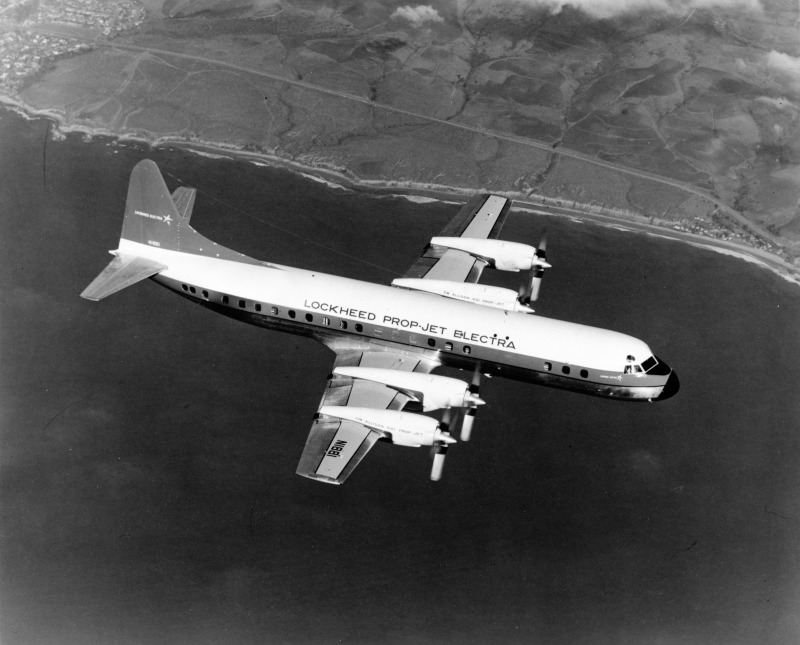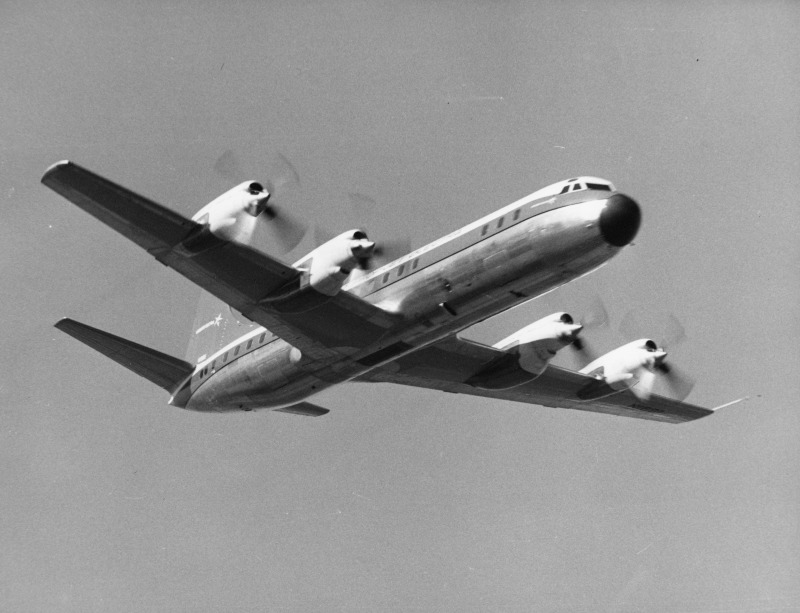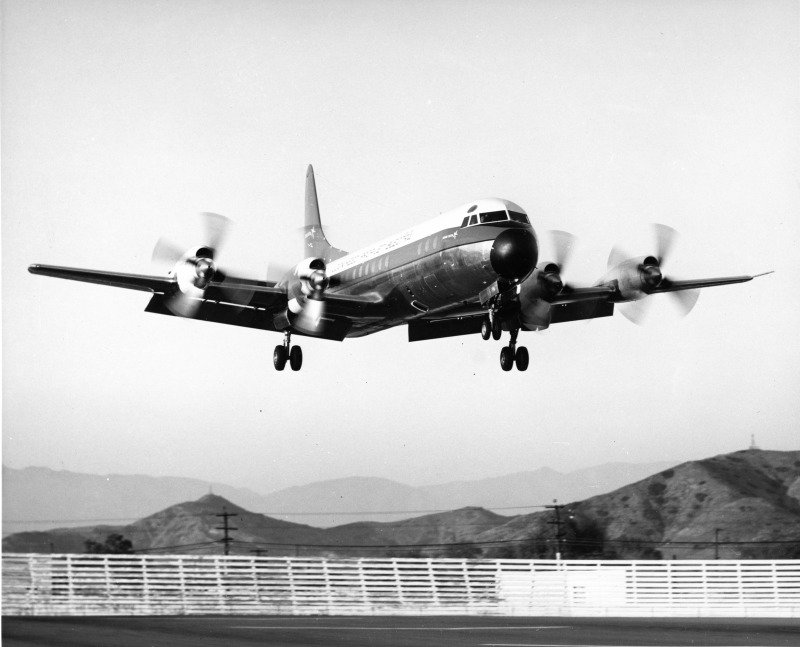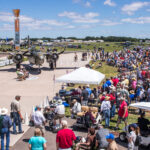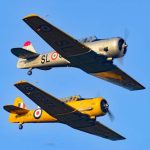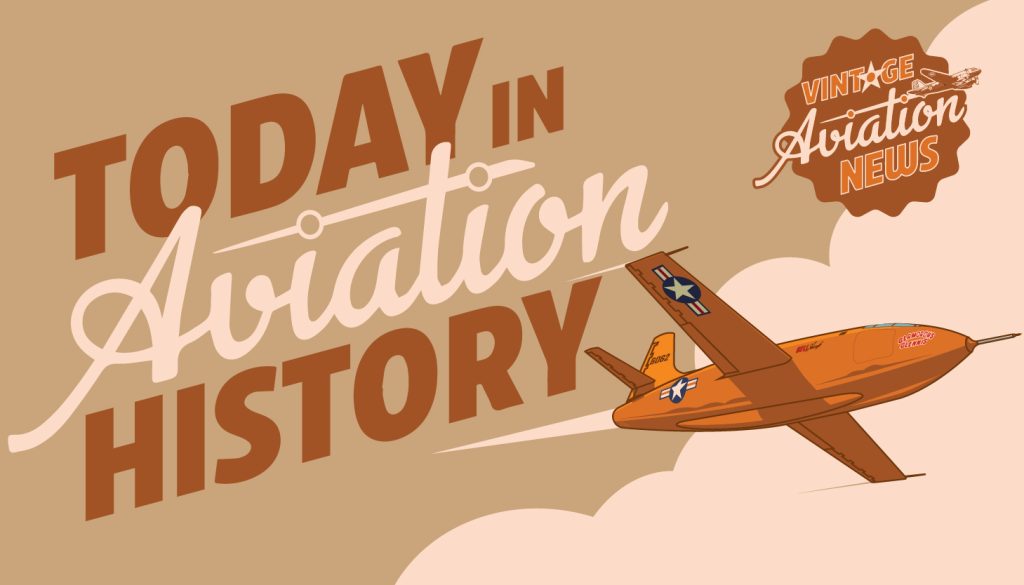 In our ongoing look into the history of aviation, we examine the day when the Lockheed L-188 Electra made its first flight on December 6, 1957. Named for the twin engine Model 10 Electra of the 1930s, the L-188 Electra was the first American turboprop airliner, and would also serve as the basis for one of the most enduring designs in maritime aviation, the P-3 Orion. Although commercial carriers in the United States would look to Lockheed, who had earned a reputation in piston engine airliners with their Constellations, for turboprop design as early as 1951, the impetus for the design of the L-188 began in 1954, when American Airlines and Eastern Airlines came to Lockheed with a request for a turboprop to compete with the Vickers Viscount that was entering service with regional airlines in the United States. The new design was to have a faster cruising speed, greater comfort, and be profitable enough to fly both short-haul and long-haul routes without refueling stops. Originally intended to be powered by the Rolls-Royce Dart or the Napier Eland, the new design was modified to accept the Allison 501-D, a commercial version of the T56 turboprop used by Lockheed’s own C-130 Hercules military transport. Work on the first prototype began in 1955, and by the time it was ready for its test flights some 26 months later, Lockheed already had orders to build 129 examples. But all this was depending on the prototype’s performance.
In our ongoing look into the history of aviation, we examine the day when the Lockheed L-188 Electra made its first flight on December 6, 1957. Named for the twin engine Model 10 Electra of the 1930s, the L-188 Electra was the first American turboprop airliner, and would also serve as the basis for one of the most enduring designs in maritime aviation, the P-3 Orion. Although commercial carriers in the United States would look to Lockheed, who had earned a reputation in piston engine airliners with their Constellations, for turboprop design as early as 1951, the impetus for the design of the L-188 began in 1954, when American Airlines and Eastern Airlines came to Lockheed with a request for a turboprop to compete with the Vickers Viscount that was entering service with regional airlines in the United States. The new design was to have a faster cruising speed, greater comfort, and be profitable enough to fly both short-haul and long-haul routes without refueling stops. Originally intended to be powered by the Rolls-Royce Dart or the Napier Eland, the new design was modified to accept the Allison 501-D, a commercial version of the T56 turboprop used by Lockheed’s own C-130 Hercules military transport. Work on the first prototype began in 1955, and by the time it was ready for its test flights some 26 months later, Lockheed already had orders to build 129 examples. But all this was depending on the prototype’s performance.
On the morning of December 6, 1957, the prototype L-188 Electra, construction number 1001, N-number N1881, took off from Lockheed Air Terminal (today Hollywood-Burbank Airport) in Burbank, California. Onboard were Lockheed’s chief test pilot, Herman “Fish” Salmon, as pilot in command, with Roy Wimmer in the right seat as co-pilot, and flight engineers Louis Holland and William Spreuer. After lifting off Runway 27 at 10:44am, they headed out to sea, having secured permission to fly within naval airspace off the southern California coast between Point Mugu and San Diego, followed by two chase Lockheed planes (a T-33 and a Super Constellation). Salmon reported that “She controls beautifully. No sweat,” and returned to Burbank after 1 hour, 27 minutes in the air, having climbed to 14,000 feet and reached speeds of 400mph.
Soon, production on the Electra began in earnest, and in 1959, the aircraft entered service with American Airlines, Eastern Airlines, Braniff Airlines, and Northwest Airlines, but the aircraft was not without its issues. Propeller resonance led to noise complaints from passengers seated in the cabin ahead of the engine, leading to Lockheed redesigning the engine nacelles by tilting them upwards 3°, with Lockheed also offering modification kits for those aircraft already in service. But another issue would soon arise. After three fatal accidents involving L-188 Electras, investigators discovered that the engine gearboxes on the outboard engines would crack, especially after wear and tear from hard landings, with the resultant reduction in rigidity leading to “whirl mode flutter,” where the oscillation from the engine would resonate with the frequency of the aircraft’s outer wing structure to the point that the outer wing panels themselves would begin a violent up-and-down oscillation until they were ripped from the plane. To solve this, Lockheed developed the Lockheed Electra Achievement Program (LEAP) to strengthen the engine mounts and wing structures and replace some of the wing skins with thicker material.
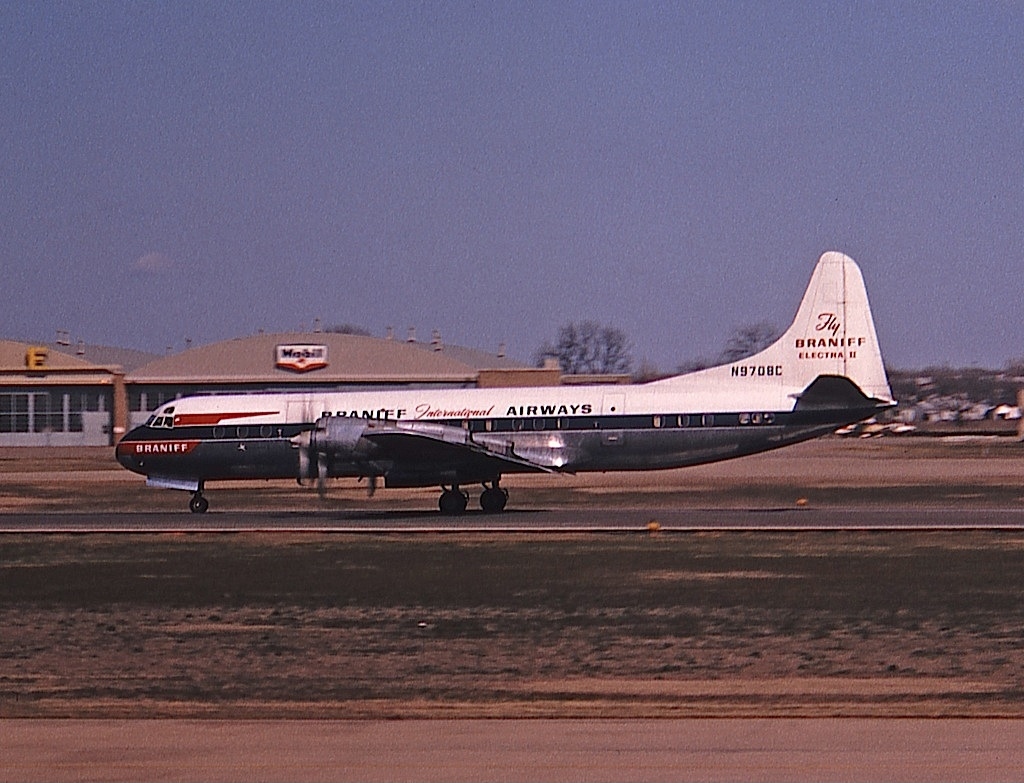
While the company would oversee the implementation of these changes, the flying public lost confidence in the Electra through the resultant media coverage. This combined with the fact that smaller turbojet designs for regional routes such as the Boeing 727 and the Douglas DC-9 were also on the market meant that the Electra would be largely phased out from the big airlines in the United States by the 1970s, with the Electra losses costing Lockheed an estimated $57 million, not including lawsuits resulting from the accidents. However, the Electra remained in use with smaller airlines or was modified for cargo flights, with a loading door installed on the left side of the fuselage along with a reinforced floor. The L-188 Electra would continue to fly overseas in the South Pacific with Tasman Empire Airways Limited (TEAL) and its successor Air New Zealand on flights across the Tasman Sea, and the Australian carriers Trans Australia Airlines (TAA), Qantas, and Ansett carried passengers and cargo between the Australian state capitals and to international destinations such as Port Moresby, Papua New Guinea, Hong Kong, Japan, and New Caledonia.
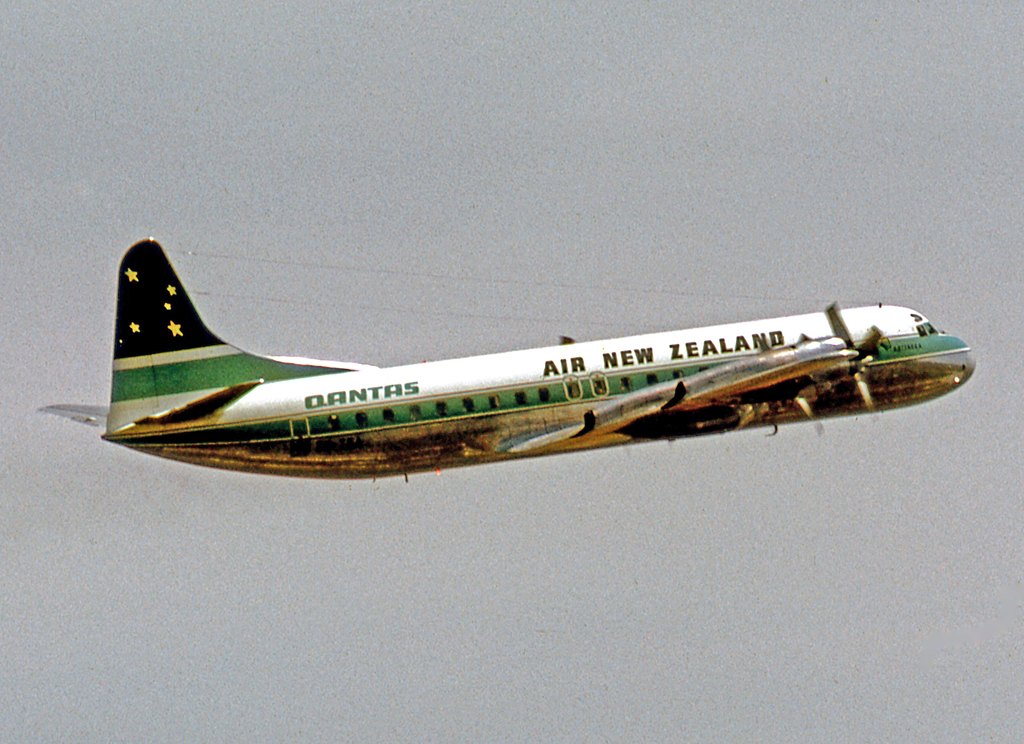
The Electra also found success in South America with Lloyd Aéreo Boliviano and Líneas Aéreas Paraguayas, but saw huge success with the Brazilian flag carrier Varig, who used them for 30 years on the Rio de Janeiro-São Paulo shuttle service, which became known as the Ponte Aérea (“Air Bridge” in Portuguese) before being replaced by Boeing 737s and Fokker 100s in 1992. Such as was the popularity of the Electra on the Ponte Aérea that it received widespread press coverage and tributes in Brazil.
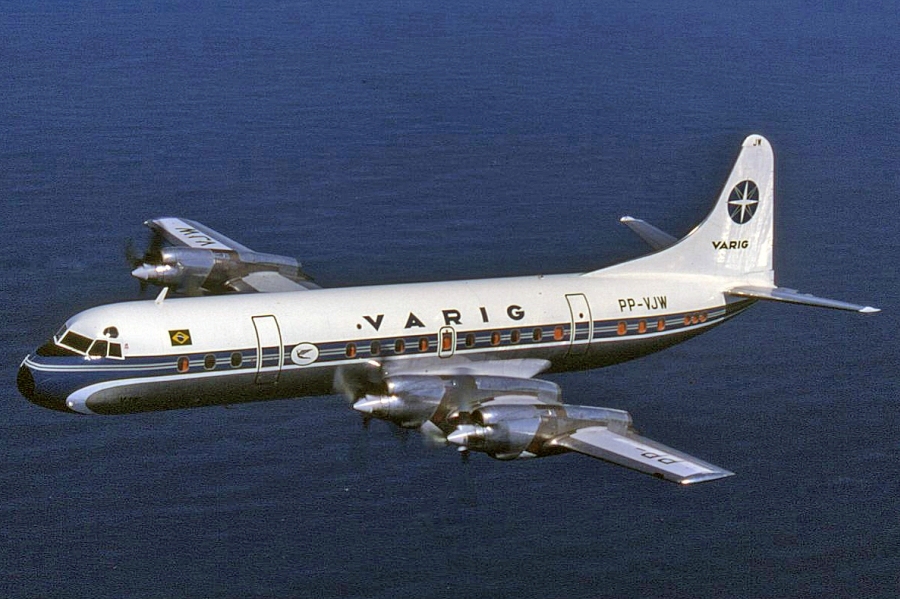
Even as the Lockheed Electra was beginning to leave the ground for the first time, the US Navy realized the potential for its design as a new maritime patrol and surveillance aircraft. The third prototype Electra, c/n 1003, was modified for flight testing, and by 1962, the Lockheed P-3 Orion would enter service, where it remains in active or reserve duty among much of the world’s navies to this day, along with being used to monitor hurricanes. There are only a few remaining L-188 Electras in operational service, with these being found in Canada with Buffalo Airways as cargo carriers serving remote communities in the Northwest Territories and as aerial firefighters and with the air tanker service Air Spray, fighting fires in Canada’s vast forests. While the L-188 Electra may not have found the success its designers intended it to have, the aircraft still proved to be a workhorse for its time, providing long range, fast travel to regional airlines and cargo carriers around the world, and becoming the basis for a highly successful military aircraft, something that is still worth celebrating.
Today in Aviation History is a series highlighting the achievements, innovations, and milestones that have shaped the skies. All the previous anniversaries are available HERE






